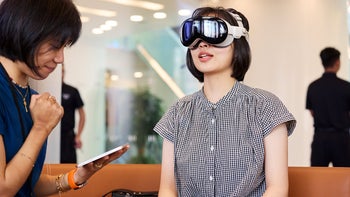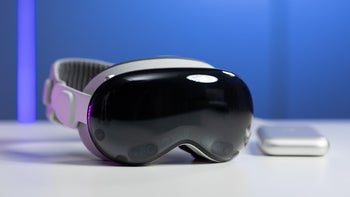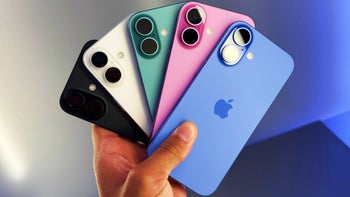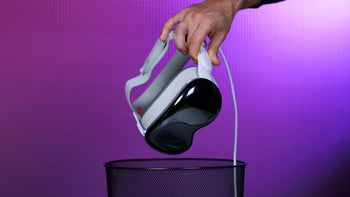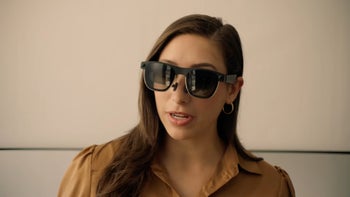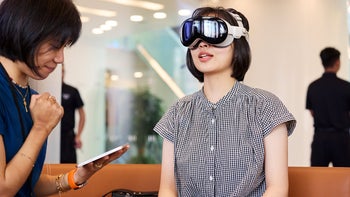Apple Vision Pro release date, price and features

The Vision Pro is Apple's first XR headset — XR meaning mixed reality, a technology that combines both virtual and augmented reality capabilities within itself. There is, however, more to the device too. It opened up a whole new device category for Apple, which required its own operating system: visionOS. Tim Cook and company want us to call the thing a "spatial computer", which it pretty much is.
Also read:
In our review, Rad found that the experience was memorable and even intoxicating in the best possible way. While the true potential of the device remains untapped, the vision — pun intended — is absolutely there. Gestures and seamless integrations just feel too good to be easily forgotten, yet finding ways to integrate your complete workflow with the device seems challenging at times. Needless to say: everything looks spectacular and realistic. Both he and I are convinced that the Vision Pro is a glimpse into the future, and we're excited to see where the tech gets us from here.
There is no point in avoiding the elephant in the room: the Vision Pro, with its hefty $3,500 price tag, is very expensive and basically out of reach for most people, even if they were interested in trying out this exciting new technology. The Vision Pro is also (unsurprisingly) limited to Apple's own ecosystem, even if third-party developers are doing their best to bring it out of it. But that last statement probably underlines something else as well: the Vision Pro feels like a first-gen product in terms of functionality. As in: there's not much for you to do with it, unless you're a very specific type of user.
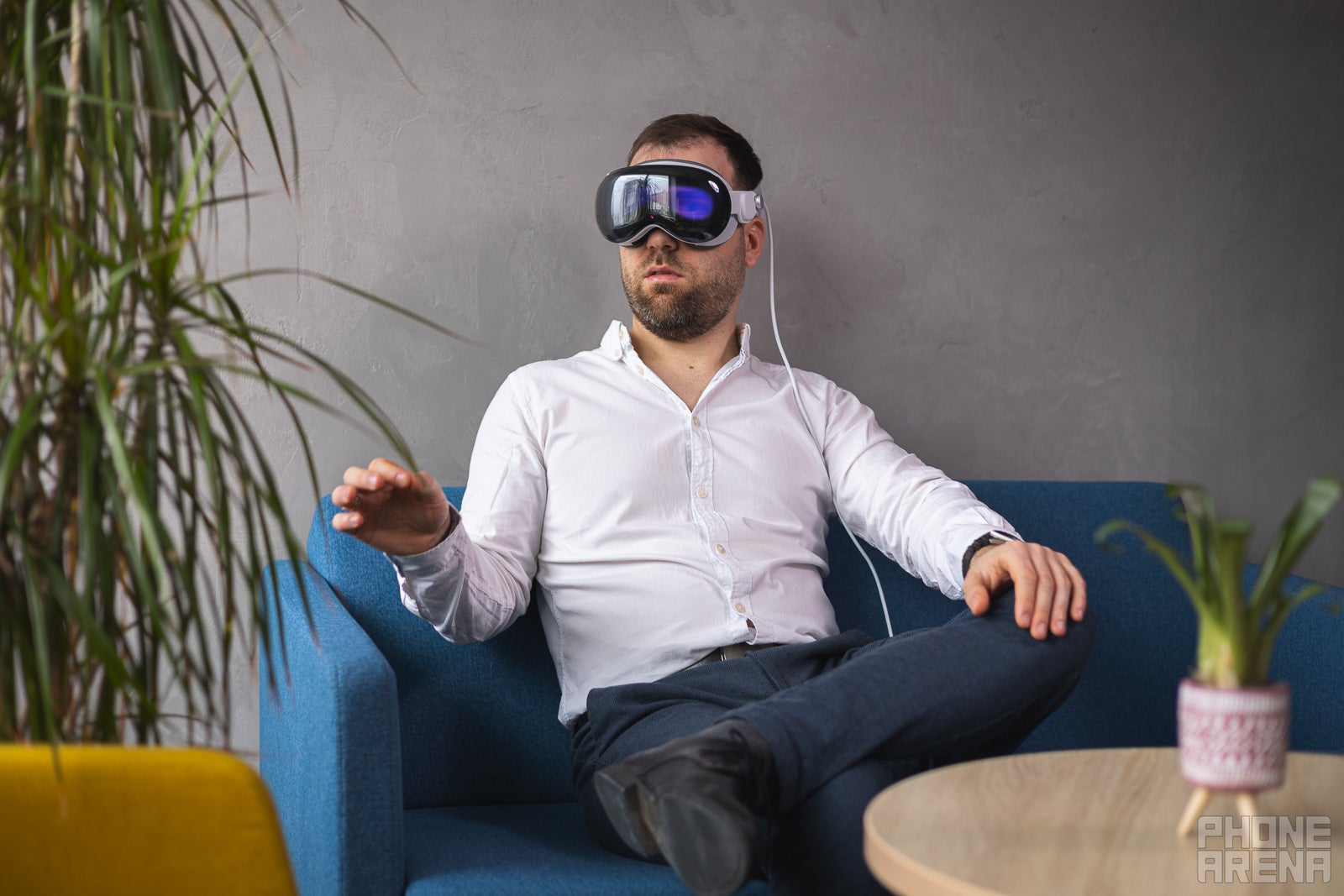
Our own Rad, testing the Vision Pro. | Image credit — PhoneArena
So, who is that user? Well, it's the power-user with disposable income, that is already knees-deep in Apple's ecosystem . The person who can benefit from having a portable, albeit imperfect workstation that can bring all of their files and projects along for the ride. And, of course: an early adopter, who is willing to wait out the device's early phase, brimming with expected shortcomings. Oh, and so long is money is not an issue: you'd be interested in the Vision Pro if you simply want to experience cutting-edge tech.
Unlike it's sort-of-but-not-really competitor from Meta: the Quest 3, the Vision Pro is not an entertainment-first device. Sure, you can play games on it and you'll likely be able to do a lot more of that in the future, when its launch becomes global and more developers make games for it, or port games to it. Immersive movies are also available on the device and there's more to these than just simple 3D. But what makes the Vision Pro special is how it empowers you to do more beyond having fun.

The big reveal for the Vision Pro in 2023.
What makes the Vision Pro so high-end? Well, it's build quality is superb and the tech inside is very impressive. The included M2 chip is powerful enough to handle pretty much every multitasking scenario you can throw at it, all the while practically supporting dual-4K monitors. But the truly impressive bit about the Vision Pro relates to Apple's in-house specialty: UX, or the user experience. Which just so happens to be something that was sorely lacking with other AR/VR headsets, even the Quest 3.
Apple made very specific and conscious choices when it comes to the Vision Pro: it comes without controllers and hand-tracking on it feels like magic. Not only that, but after you get used to it, it becomes pretty difficult to forget that it exists. It practically becomes second nature, which means only one thing: Apple is on the right track with spatial computing. And to further reinforce that statement we have things like picture quality and mixed-reality passthrough quality, both unsurpassed by any other headset on the market, as of 2024.
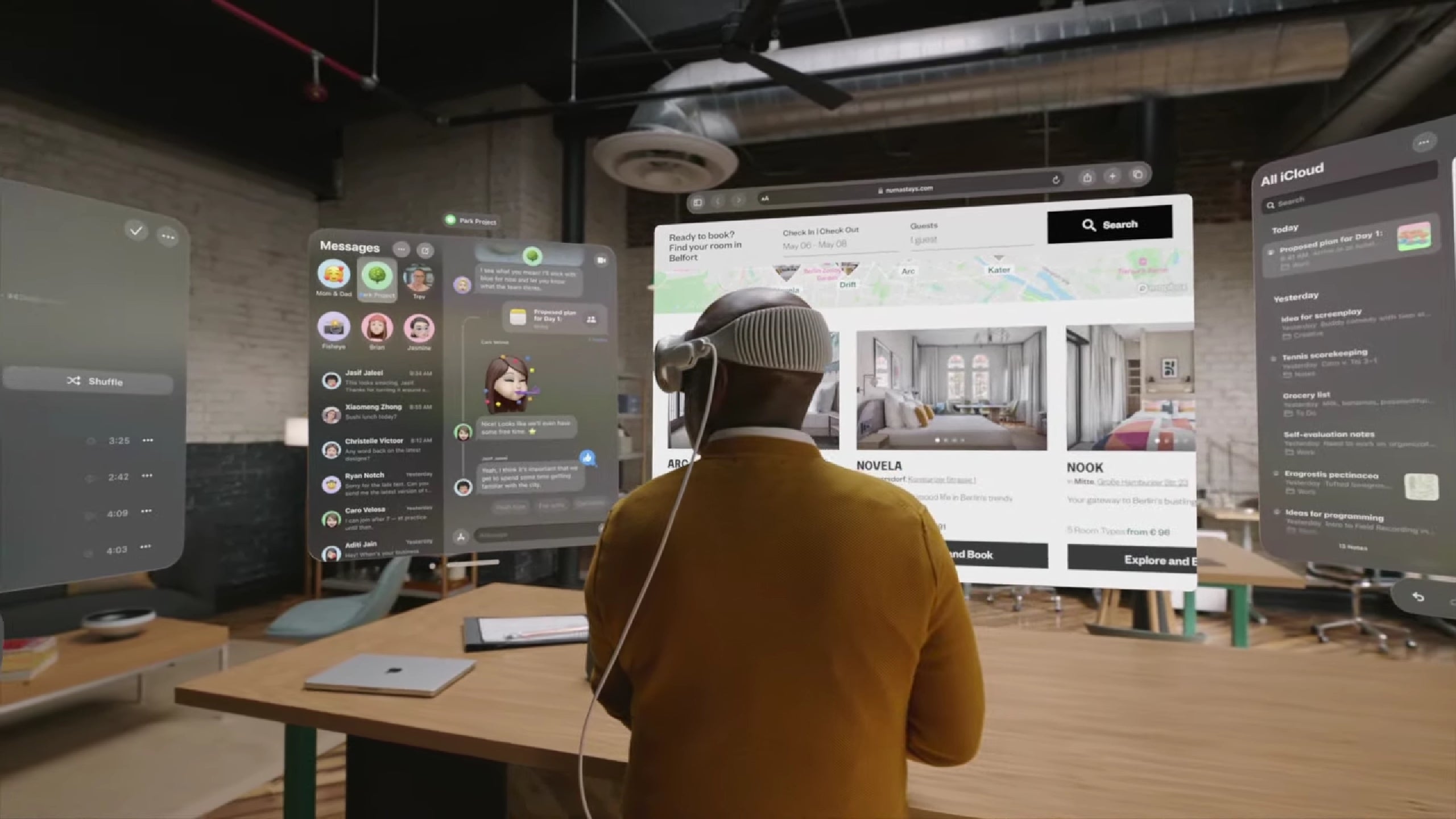
This is the sort of user that Apple is targeting with the Vision Pro.
So, all of this praise makes it seem like the Vision Pro is a must-have, right? Well, no. As previously stated: it's not for everyone. It is heavy, the battery is separated from the headset, meaning that you always have a cable dangling around and of course: it takes some getting used to. Don't get me wrong: it's incredibly impressive. But it also feels like Apple is not just launching a new product, but paving the way towards a potential future for technology. One built around mixed-reality and spatial computation.
For the time being, though, the Vision Pro's launch is limited to the United States. Apple widened the availability of the Vision Pro by the end of 2024, including a launch in China, where it was expected to find success. The Vision Pro, and any following iterations or variants of it that are sure to follow, have a long way to go. But we're brave enough to make a statement about their imminent existence precisely because of how impressive the Vision Pro itself is.
Months after the Vision Pro's release, on a surface level, the headset seems to be struggling:
- Apple can't figure out how to lower it's price, while most AR/VR consumers are adapting to rival, affordable headsets by Meta, such as the $299 Quest 3s and $499 Quest 3 instead
- Production seems to have been negatively impacted by underperforming sales numbers
- While the Vision Pro is slowly getting released in more and more regions, a global launch has still not been announced, but it is expected to happen by the end of 2024
Despite that, Apple and Tim Cook specifically, seem as enthusiastic as ever about the spatial computer, saying that it has been adopted by half of Fortune 100 companies and used extensively by professionals to expand their the automotive, medical and artistic fields.
Apple put the Vision Pro at the foremost of it's line-up for WWDC of 2024 too, where a bunch of new features were announced for the spatial computer. Most notable among them: VisionOS 2, expected to release in Fall of 2024.

Jump to section:
Apple Vision Pro release date
- Release date: February 2, 2024, which was revealed via a blog post that Apple released on 08 Jan, 2024.
- Pre-orders went live on January 19, 2024 at 08:00 ET. Available only to users who either own or have access to an iPhone X or later or certain models of iPad Pro.
- Availability: The Vision Pro has been confirmed to become available in Apple Stores across the US on February 2, 2024. Pre-orders and online orders will start shipping on that same day too. The launch is limited to the US for the time being.
- Announcement date: June 5, 2023 during WWDC.
- Apple Store demos were available, but for one weekend only: an email, sent out to select media outlets by Apple, confirmed that the weekend immediately following the release of the Vision Pro, will give fans a chance to try out the Vision Pro. This means that if you wanted to try the headset out, you could had a chance to do so on the 2nd, 3rd or 4th of February, 2024. It is not clear if Apple ever intends to repeat the live demo process in the future.
Apple has released a video Guided Tour for the Vision Pro, possibly aimed at those who won't be able to attend an Apple Store over the release weekend to check the spatial computer out in person:
It is possible that the vid is based on the scenario that in-person testers are planned to go through, if they attend an in-store demo session for the Vision Pro.
- Online orders require face scanning: a newsletter email, sent out by Apple, revealed that a face scan will be required before users can finalize online orders for a Vision Pro unit. The results of the scan will help Apple determine what size of light seal and head bands would be best for your use-case. The scanning takes place via the App Store app itself and thus requires an iPad Pro or iPhone model with face scanning capabilities.
- Wider availability of the Vision Pro was announced during WWDC of 2024. Apple specified a limited list of countries beyond the US in which the spatial computer will become available by the end of 2024. First among those are China, Japan and Singapore with parts of the EU and Canada following suite.
Apple Vision Pro price
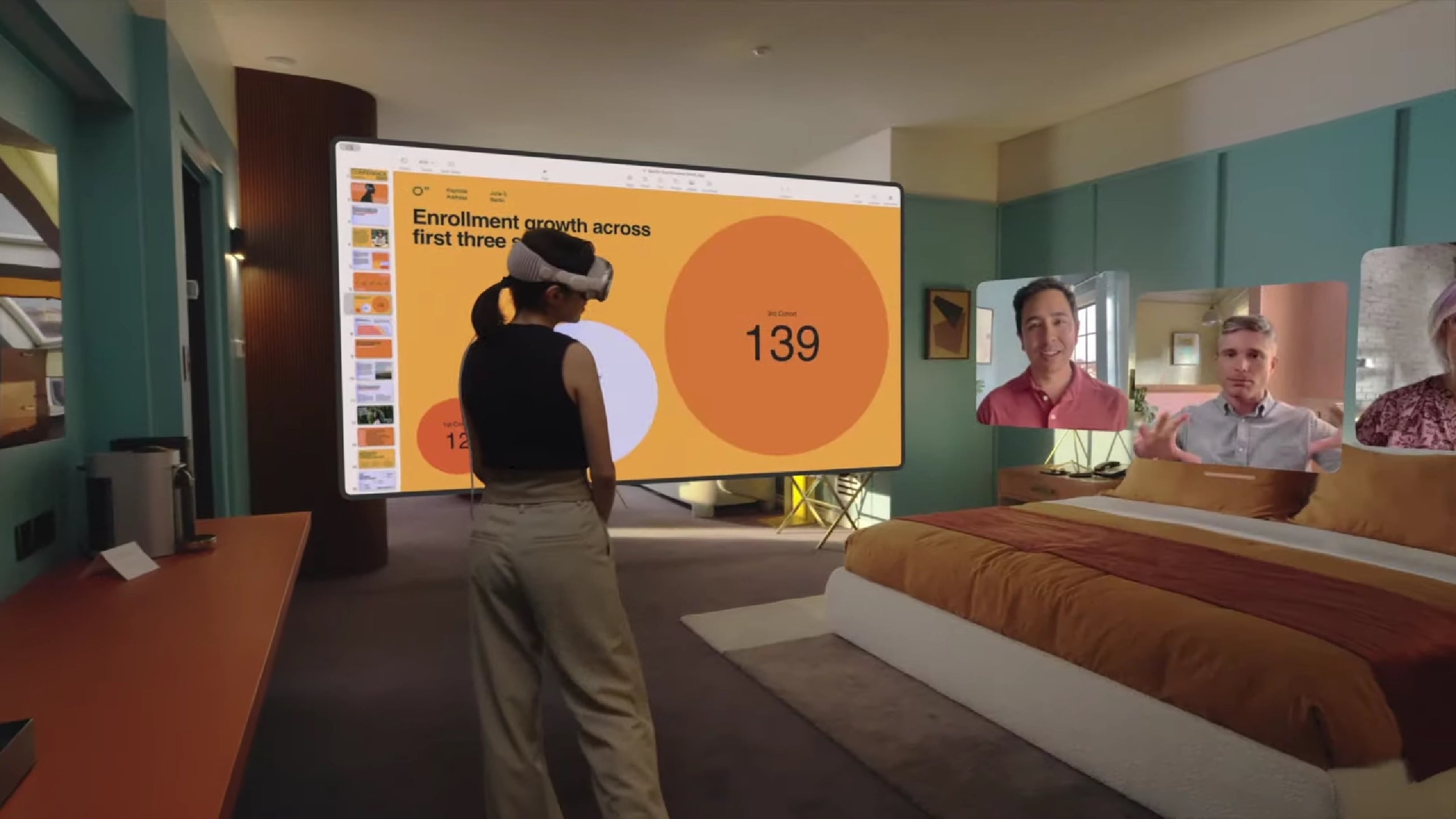
What crowd is expected to pay this much for a headset? The rigth one.
- Final price: $3,499 for the base model with 256GB of storage
If you so choose, you can bump the internal storage of the Vision Pro for 512GB for $3,699 or up to 1TB for $3,899.
- How are sales coming along for the Vision Pro?
Initial pre-order sales estimates dismiss any concerns over very low stocks for the Vision Pro and — if completely true — indicate that Apple might have managed to sell about 180,000 spatial computers over the first weekend when the headset first became available to pre-order.
Those interested in the Vision Pro should know that a proper, detailed price breakdown is available. Truth be told, the numbers are estimates, as Apple hasn't revealed the exact price of each individual, required for making a unit of the Vision Pro. That being said though, the logic of the report makes enough sense to sound believable.

A table with Omdia's estimates, but keep in mind that these exclude R&D, software, marketing and everything else.
- The price may be right: Sure, it's a price far exceeding the $500 asking price of the Quest 3, which as of January, 2024 is the most powerful commercially available XR headset on the market. But the Quest 3 is also an entirely different type of device, geared towards entertainment and manufactured by a company that owns the biggest online store for AR/VR apps and games (all of which earn Meta a cut). Of course, Apple has the benefit of it's very own ecosystem and the multitude of apps available there, but it is still unclear what percentage of those will run properly on the Vision Pro. Furthermore: what amount of them will get proper Vision Pro-specific versions, which take advantage of the headset, developed in the future.
- What does this mean for the Vision Pro's price?: Apple may have opted to charge you up front with a larger sum, without having to rely on additional income in the form of earning cuts, sales of accessories or anything of the sort, which is very much the strategy that Meta is imploring at the moment. Considering that it's the first product of it's kind for the company, makes total sense. Plus, there is another side to the story here: gamers and the entertainment crowd aren't used to such high asking prices, but they aren't the real target audience for the Vision Pro. Higher-end workers are more inclined to invest in the means through which they get the job done, especially if the product is worth it.
- The Vision Pro got new price points for its wider release in June 10, 2024:
○ €3,999
○ ¥24,502 for China
○ ¥484,415 for Japan
○ S$4,725 in Singapore
Apple Vision Pro design
- Comfort seems like a priority: Apple has gone on record saying that it has sourced inspiration from among it's other successful products such as the Apple Watch when approaching the comfort factor of the Vision Pro. A mix of woven nylon and 3D-knitted textile have been picked in order to ensure that the headset fits a wide range of people in a comfy fashion.
- Solving the weight conundrum: Apple has been transparent about weight being a challenge, which makes sense given that the Vision Pro features an external display, which requires the use of polished glass on the headset's front too. As such, the solution that stuck was to remove have the battery of the Vision Pro be external and connected via a cable, which reduces the weight of the headset. Even at that, the Vision Pro was heavier than other prominent VR models.
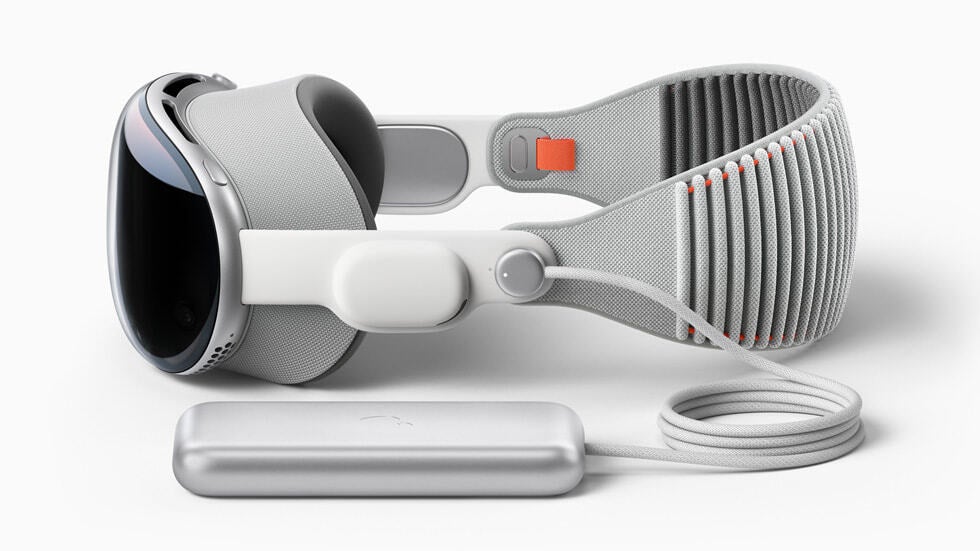
Notice how the Vision Pro's battery is separated from the headset.
- Form factor: Comparable to that of a ski-mask, especially considering that the Vision Pro has a broader frontal visor, Apple's first headset has a familiar form factor that is seemingly focused on offering a better fit. The headset is thinner than most current-gen competitors, but if that will remain the case for the final iteration of the Vision Pro is still unclear.
- Adjustability and fit: Like all existing XR headset, the Vision Pro will allows users to adjust a range of options in order to achieve a higher level of comfort. That being said, though, the options are not limitless, due to users having to get a specific "size" for the Vision Pro's accessories when ordering the headset.
- The Digital Crown of the Vision Pro lets you tune the amount of immersion you'd like to have. It is still unclear in which scenarios the crown will function like this and where it may gain other applications, but for now Apple has shown us users in Environments, which can "dim" their presence via turning the know.
- More on the Zeiss collaboration: For those who require glasses, custom-fitted lenses for the Vision Pro are available. Two types of lenses exist:
- Readers, priced at $90
- Prescription, priced at $150
These can be ordered during checkout or in-person in Apple Store.
- Support for multiple users: Support for multiple users on the Vision Pro does exist, even though the device is mostly designed with the intent of it being available to a single individual. Guest mode is available, but Apple also allows owners to swap out bands and lenses, so that other users can enjoy the Vision Pro in comfort.
Apple Vision Pro display and IPD expectations
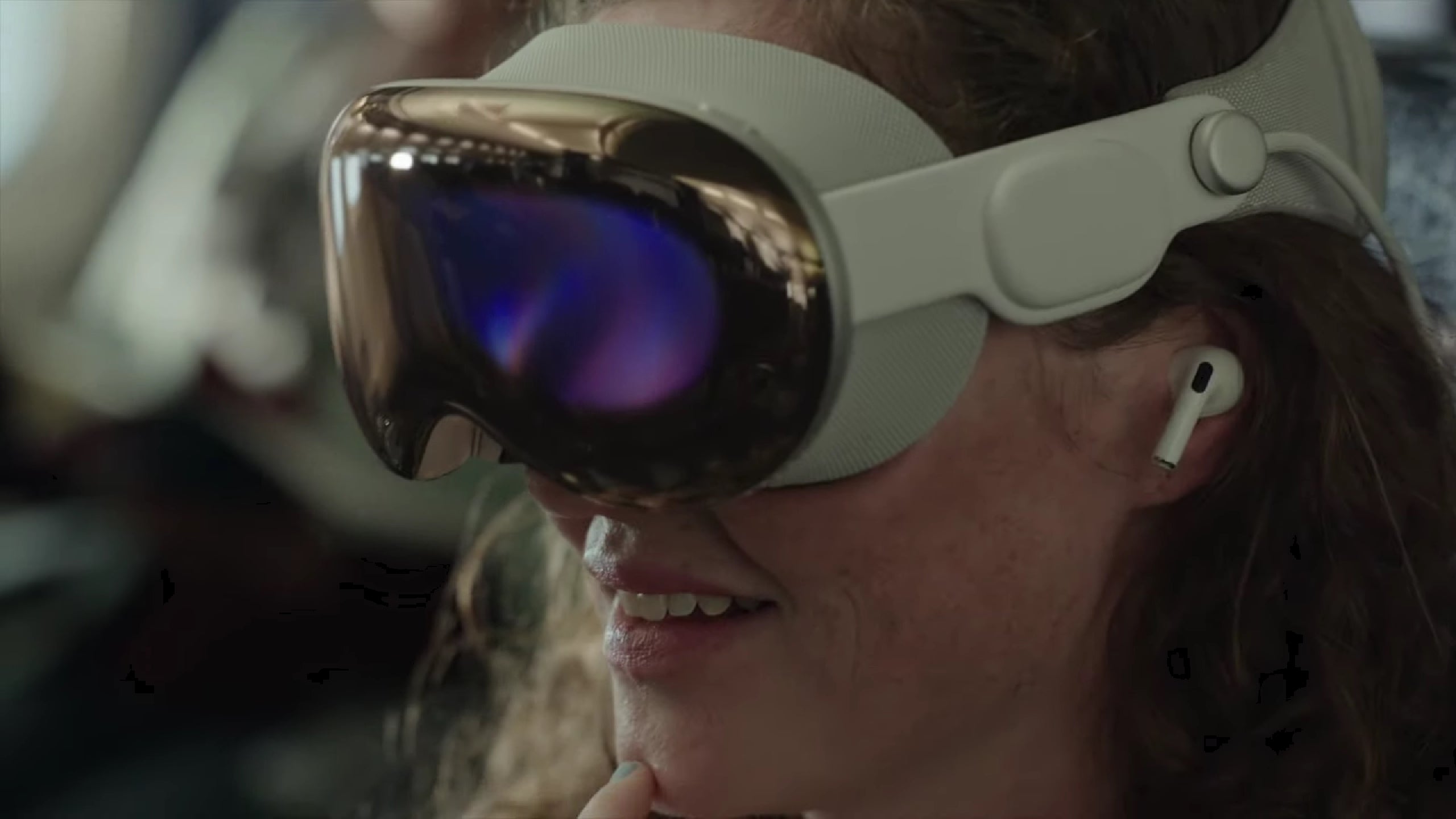
The displays are expected to be some of the Vision Pro's most impressive components.
- Display resolution: 3660×3200 per eye
- IPD range: 51-75mm
During our time spent with the Vision Pro, we discovered that its screens are truly unlike anything we've tested before. Issues like "pixelation" or "dimming" are practically non-existent. Due to the impeccable image quality, eye-fatigue is a much rarer occurrence too. Best of all: all processes regarding getting the most out of the Vision Pro's capabilities based on your vision are fully automated, so you don't have to worry about adjusting them all the time, as is the case on a lot of other VR headsets.
Apple Vision Pro specs
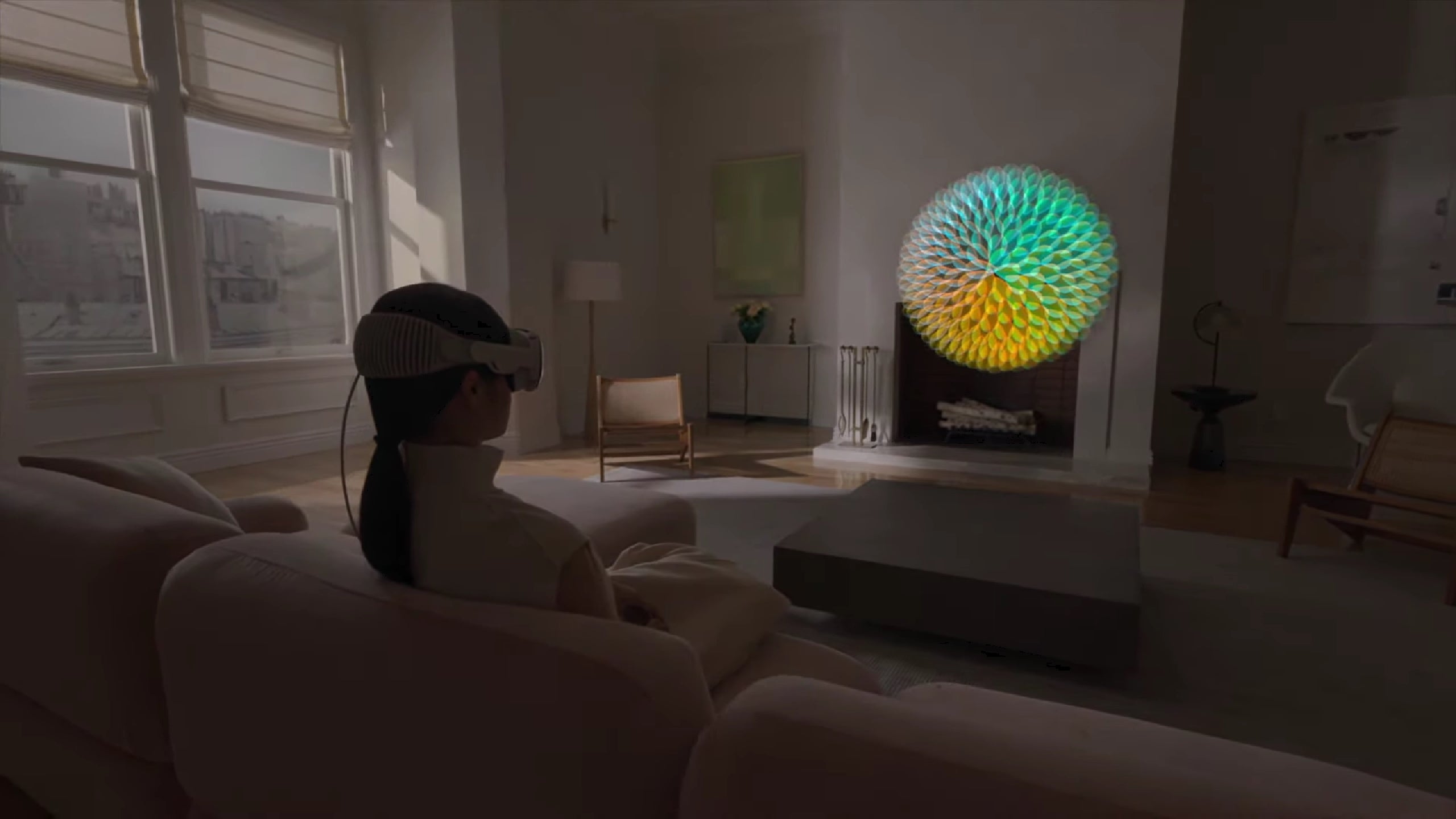
| Apple AR/VR headset specs (speculated) | |
|---|---|
| Display | Two 1.4" micro-OLED displays, working at 3660×3200 per eye |
| IPD range | Adjustable, 51-75mm |
| Processor | Apple M2 |
| Battery | External, waist-mounted, rechargeable Up to 2-hour battery life or whole day when plugged in |
| RAM | 16GB |
| Storage | 256GB, 512GB or 1TB; non-expandable |
| Speakers | Stereo, powered by the H2 chip No 3.5mm headphone jack |
| Operating system | visionOS |
| Controllers | Siri voice recognition, a built-in Digital Crown Eye- and hand-tracking for interface navigation |
| Tracking | 3D cameras, infrared, and LiDAR sensors for room scale tracking, hand and body tracking and positional tracking |
| Support for users with glasses | Yes, with prescription lens inserts |
- Storage space variants: when pre-orders for the Vision Pro went live, the process confirmed that three different variants of the device will be available, regarding storage:
- 256GB for $3,499
- 512GB for $3,699
- 1TB for $3,899
- Doesn't come with controllers: Apple made the choice to focus on hand-tracking and eye-tracking as means of navigation for the Vision Pro. While both methods feel vastly more natural than using any sort of VR controllers, this does mean that the users interested in experiencing apps and games that require additional controller inputs will have to buy controllers separately. The Vision Pro is stated to support a wide range of existing Bluetooth controllers and also offers mouse and keyboard support.
- External battery pack: The Vision Pro comes with an external battery, which can give you about two hours of general use or 2,5 hours of video playback. You are able to buy multiple battery packs and swap between them, but you will have to power off the device in order to do so. The Vision Pro can, however, be used while charging.
- A teardown revealed that the Vision Pro's battery actually consists of three iPhone-sized cells, weighing 353 gr. in total. It also revealed that beneath the glass panel of the headset, there is a plastic layer, containing a lenticular film, which is causing the neat 3D-effect of EyeSight. That being said, the same technology is to fault for the lack of brightness on the Vision Pro's front-facing display.
- Sturdy, yet not unbreakable is the consensus from early teardowns and drop-tests concerning the Vision Pro. The device will, of course, scratch with use, but in most cases, said scratches won't disrupt it's functionality in any meaningful way. A YouTuber dropped the Vision Pro from varying degrees of height a total of eight times before the headset's glass panel cracked, but even at that, it remained fully functional. Fair warning though: if you need Apple to replace the Vision Pro's glass panel for you, that will cost you $800.
Apple Vision Pro: what's in the box?
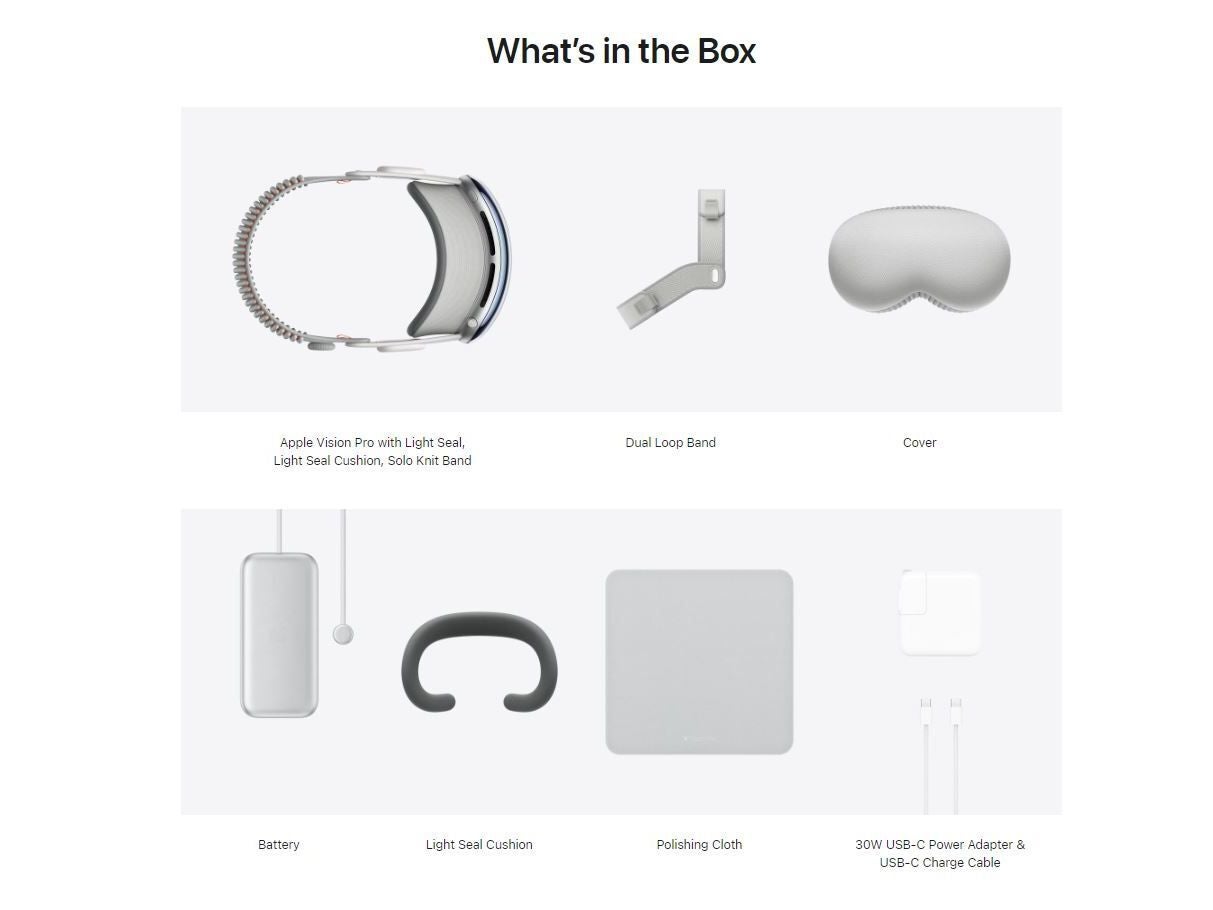
When pre-orders for the Vision Pro went live on January 19, the product page also revealed everything that's expected to come with a Vision Pro unit:
- The Vision Pro
- Light Seal: to prevent external light from interrupting your experience
- Light Seal Cushion: for extra comfort
- Solo Knit Band: the one seen in most marketing materials
- Dual Loop Band: an alternative, offering supposedly better weight distribution
- Cover: protecting the front of the spatial computer
- Battery: the external battery pack for the headset
- Polishing Cloth: to keep your headset shiny
- 30W USB-C Power Adapter: for charging the battery pack
- USB-C Charging cable: not confirmed, but possibly usable for data transfer too
The package is pretty much what we expected to see, so the real questions here are:
Considering Apple's own wording from the Vision Pro's pre-order page, if you want to share the headset with another user, they may need a Light Seal and a head strap. Luckily, both are already sold separately via Apple's online store.
How much would it cost you to get an additional set of accessories, so that someone else in your household could use the Vision Pro too?
Considering Apple's own wording from the Vision Pro's pre-order page, if you want to share the headset with another user, they may need a Light Seal and a head strap. Luckily, both are already sold separately via Apple's online store.
- An extra Light Seal will run you $200
- Another Solo Knit Band will cost you $99
- And if you prefer the Dual Loop Band, that's also $99
Now, the good news is that you don't need both bands. Whoever else in your immediate circle, that wants to use the Vision Pro, can check out the bands that came with the headset and decide which one they would prefer. But still: that's another $299, just so another user could have a proper fit.
How much would an additional Battery pack cost you, if you want to have two so you could hot-swap between?
Additional battery packs for the Vision Pro are already sold separately on Apple's online store for $199.
Apple Vision Pro's unique features
- Running on visionOS: the Vision Pro is running it's own dedicated operating system (OS), called visionOS. The interface of the OS follows in Apple's design philosophy with a minimal aesthetic and human-centric design. Users will be able to navigate it via a combination of eye-tracking, voice commands and eye gestures. This means that, in most cases, you'll be able to get where you want to go just by looking at the right place and pinching with your index finger and your thumb.
- visionOS and app availability: visionOS will enable users to run most — if not all, but that isn't confirmed yet — iPad versions of apps, available on the App Store. That being said, most of those will run in a flat screen mode, which means that users will either see them as flat projections or will be able to pin them as active virtual monitor windows in MR. The OS allows developers to create custom app versions, optimized for the Vision Pro itself and thus far, developers have praised Apple's approach, even if we haven't seen any of the final results for the time being.
- The App library of the Vision Pro consists of about 150 dedicated spatial apps at launch. Even though Apple quotes "over a million apps" in the commercials, the company means that most of the App Store's offerings will be able to run in virtual windows on the Vision Pro. Some notable exceptions such as Netflix or YouTube exist and that counts for their iPad versions as well.
- Gaming on the Vision Pro is possible so long as you don't have the wrong expectations. Playing games available on the iPad, on a flatscreen, is a blast and you can enjoy those even with a controller (where applicable). VR games, as we know them, are still a challenge primarily due to Apple's choice to ship the Vision Pro without controllers. That being said, third-party developers are working on numerous solutions. Thus far, functionality with SteamVR has been secured, but if you want to truly enjoy your PC VR library, you'll either need a set of tracking stations and controllers or a pair of Nintendo Switch Joy Cons. Naturally, as time passes, we expect for a more elegant solution to become available.
New video tutorial showing Persona Enrollment for Apple Vision Pro added in visionOS beta 6!
— M1 (@M1Astra) November 14, 2023
The enrollment uses the EyeSight display to guide the user. pic.twitter.com/cGfsdTuIaY
- EyeSight, Optic ID and your virtual Persona: EyeSight is what one of the more controversial features of the Vision Pro is called: the ability for the headset to display your eyes — or a multitude of other things — on an external display, mounted on the front of the device. The feature itself is also linked to how you create your virtual Apple avatar too and the entire workflow is impressively simple. The same process leads to the creation of an Optic ID too: Apple's security solution for the Vision Pro. Personas are still in Beta, as of 2024, and are expected to become vastly improved as time goes on.
- 3D movies and immersive movies: the Vision Pro is able entertain users with two types of movies, especially optimized for Apple's MR headset. 3D movies are just that: movies, displayed on a flat screen, but in 3D. Immersive movies, on the other hand, aren't just 3D, but they attempt to position the viewer as part of the action.
- Spatial Videos: these were introduced during the Vision Pro's reveal and are essentially 3D videos that the user can capture using specific iPhone 15 models, running iOS 17.2 or higher and then played back only on a Vision Pro headset. Apple is marketing these as a type of media that allows you to re-experience memories, but it's not like you can dive in and walk around the moment as if it is a scene. Those that have tried the feature say that it's slightly more immersive than 3D, until you focus on the details around any subjects with contrasting depth, which is when the idea starts to show signs of imperfect AI computation. Naturally, with time, the quality may improve, but the real question is how far will Apple be able to make the format closer to feeling like you're actually re-experiencing a memory.
- The ability to set up an MR virtual workspace: The Vision Pro has been shown to be capable enough to mix it's spatial computation data with it's rendering MR capabilities in order to let users attach virtual objects to the real world. This means that, in theory, so long as you have some empty desk space, you can set up an entire workspace with numerous virtual monitors. In an ideal setting, this would also remove the need for a mouse and keyboard, but for the time being, the Vision Pro's keyboard isn't up to the challenge just yet.
- Not forgetting your passcode is essential when owning a Vision Pro, because if you need to have it reset, you may have to visit an Apple Store or get it completely replaced. Apple representatives can offer you a Developer Strap for $290, which you can use to reset the Vision Pro at any time via connecting it to an iPad or laptop, which is a bit extreme. Optic ID exists on the Vision Pro, yes, but just like with Face ID, it can't always replace your passcode. You can turn off the need for a Passcode from Settings, but it is still unclear if that impacts the Vision Pro's functionality in any disruptive ways.
- Guest mode and Travel mode: Guest mode is a setting that kicks-in automatically as soon as the spatial computer detects that someone, other than it's primary user, has put it on. It can also be activated manually, before passing the device to another user. Travel mode, on the other hand, allows users to enjoy the Vision Pro while in a moving vehicle, like during a flight. As part of the VisionOS 2 upgrade, expected in Fall of 2024, support for trains was promised by Apple as well.
- Environment settings: This idea isn't anything new to the world of VR: these are typically different styles of rooms or environments that the wearer can choose from, while hanging out in a headset's hub area or navigating it's general UI.
- What about Vision Pro on PC? Basically: yes, but with extra steps. The fan-favorite app Immersed has already launched on the Vision Pro app store, allowing users to use Apple's headset with a Windows PC. The app also allows for up to six virtual monitors (though those will require quite a powerful computer setup too). Other popular alternatives such as Virtual Desktop are also on their way, so where's the twist? Well, essentially, since the Vision Pro doesn't come with any sort of controllers, playing conventional PCVR games is still a challenge. There are solutions out there, like using third party controllers with external tracking stations, but those inflate the already hefty price of the Vision Pro drastically, so keep that in mind. That being said, nothing stops you from enjoying conventional gaming on a huge virtual screen, which for some gamers would be more than enough.
 An overview of everything new, coming to Vision Pro. | Image credit — Apple
An overview of everything new, coming to Vision Pro. | Image credit — Apple - VisionOS 2 was announced at WWDC 2024 and is expected to release in Fall of the same year. This is the first major OS upgrade for the Vision Pro. The update contains numerous quality of life features and some new features, primarily aimed at productivity and spatial video. Support for ultra-widescreen virtual displays is expected, along with wider formats for taking spatial videos.
Using the Vision Pro outside of the USA before it is internationally released:

We knew that the announced pre-order and launch dates for the Vision Pro were US-exclusive for now, but what we did not expect is for Apple to give us more details about that at the bottom of the Vision Pro's pre-order page.
Essentially, the FAQ responses confirm that the Vision Pro is "for sale" and "designed for customers in the U.S.", followed by the obligatory "We look forward to bringing Apple Vision Pro to more countries later this year.", so I guess that we're in for the announcement of another series of dates later on in 2024.
But Apple is experienced enough to know that there are a lot of users out there, thinking that this simply wouldn't be enough. Hence, the company has provided a quick explainer about what would happen if someone were to buy the Vision Pro and then take it outside of the US. Here's a summary of that:
- The Vision Pro's interface is only in English, including typing, Siri and Dictation
- The App Store will require an Apple ID set in the US region
- Same goes for purchases through Apple Music and the TV app
- If anyone needs prescription lenses: they wouldn't be able to get them outside of the US, since only such administered by US eye care professionals would be accepted
- Certain apps, features or license-related functions will not be available
- Apple Support will be available only in the US, so if something goes wrong: you'd be on your own
In other words, if you're super-eager to get the Vision Pro, but you live outside of the USA, then you're better of waiting for the international release, which is bound to happen at a later point in 2024.
That being said, most of these would still apply even if you legitimately purchase the Vision Pro in the US as a US resident and then take it with you while travelling abroad, so keep that in mind. But hey: at least Apple is offering an official Travel Case for the Vision Pro at its online store for $199.
At the start of 2025, the Vision Pro was updated with support for Apple Intelligence, which is Apple's flagship AI platform. While not as popular with users for now, this brought the Vision Pro up to speed with some of the flagship products of the Cupertino Company, namely the latest iPhone and iPad models. This was necessary not only from a developer standpoint, but also to signify that the Vision Pro is still considered an actively supported product.
Vision Pro vs Quest 3
It is not difficult to see why a lot of parallels are being drawn between Apple's spatial computer and Meta's latest, and quite possibly greatest, VR headset. But here's the thing: they are totally different types of headsets meant for entirely contrasting types of users.
While the Quest 3 costs just $500 and supports mixed-reality features, the quality of its screens (or hand tracking capabilities, for that matter) is nowhere near that of the Vision Pro's. And even if we said that there's more that Apple can improve in terms of the Vision Pro's comfort levels, there's no quarrel when comparing the status quo between the two: the Quest 3 is notably more uncomfortable to wear, especially for longer periods of time.
That being said, the Quest 3 grants you access to Meta's very impressive library of apps and games. The headset is still one of the most powerful VR gizmos available on the market and it can let you enjoy a ton of awesome apps and games. Productivity features are also not excluded, but you'll need to pay extra for third-party apps if you're hoping to create a virtual workspace like on the Vision Pro, since the Quest 3 doesn't have any built-in spatial MR features.
Overall, here's the thing: there's no point in comparing these two devices, because it is not fair to do so. The Quest 3 is awesome in it's own right and if you're looking to experience VR and MR in a fun, engaging way: it's the way to go. But if you want a taste of the future: the Vision Pro is where it is truly at. And that goes double if you're already a productivity freak with heavy investments in Apple's ecosystem.
All in all, which device you get isn't so much a matter of funds or features as it is of your needs as a user.
Should you buy the Apple Vision Pro?

- You should buy the Apple Vision Pro if you're excited about the prospects of AR and MR, and about implementing those into your daily routine, especially if you're working from home or changing your work locations a lot (by which I don't mean working at Starbucks, by the way). If you can't wait to experience what true mixed reality means and you have the cash to spend, then the Vision Pro is likely your best option. And that last bit counts double if you love being a part of Apple's ecosystem.
- You should not buy the Apple Vision Pro, however, if you can't see yourself using the device on the regular and making the best of it, especially if you're only looking to get an XR headset just for the entertainment value alone. If that is the case, something like the Quest 3 will still be able to give you a taste of the future, without the need to pay a hefty price. You should also consider your current setup, because it is yet to be seen how much of the Vision Pro's value will be tied directly with the Apple ecosystem of products and services.
